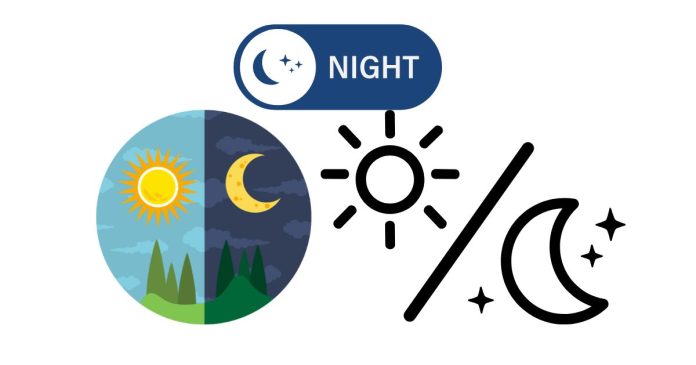Have you ever wondered why we experience day and night on Earth? It’s one of those natural phenomena that seems simple, but it’s actually tied to the way our planet moves in space. Let’s take a closer look at the science behind the day-night cycle and explore why we have these two distinct periods every 24 hours.
The Earth’s Rotation: The Key to Day and Night
The primary reason we have day and night is Earth’s rotation. The Earth spins around an imaginary axis running through the North and South Poles, completing one full rotation approximately every 24 hours. As Earth rotates, different parts of the planet are exposed to the Sun’s light, while other areas are in shadow. This gives rise to the cycle of day and night.
- Daytime: When a region of the Earth faces the Sun, it experiences daylight. The Sun’s rays provide light and warmth, creating the conditions we associate with daytime.
- Nighttime: As the Earth continues to rotate, that same region gradually moves into shadow, and we experience night. Without the Sun’s light, it becomes dark, and temperatures generally drop.
The Earth’s Tilt and Seasons
While Earth’s rotation is responsible for the daily cycle of day and night, the tilt of Earth’s axis also plays a role in creating seasons. The axis of Earth is tilted at an angle of about 23.5 degrees, which causes different parts of the planet to receive varying amounts of sunlight throughout the year. This variation in sunlight is why we have seasons—spring, summer, fall, and winter—but the day and night cycle itself remains consistent, with one full rotation every 24 hours.
The Duration of Day and Night
The length of day and night can vary depending on where you are on Earth and the time of year. Near the Equator, day and night are about the same length year-round. However, the further you move toward the poles, the more extreme the difference between the lengths of day and night becomes, especially during summer and winter months.
- In the summer, regions closer to the poles may experience longer days with extended periods of daylight.
- In the winter, these areas may have shorter days or even experience continuous darkness, known as the polar night.
Why Does Day and Night Matter?
The cycle of day and night is critical for life on Earth. It helps regulate biological rhythms, including the sleep-wake cycle in humans and animals. It also plays a role in plant growth, as many plants rely on sunlight for photosynthesis, the process by which they make their food.
In conclusion, the reason we have day and night is due to Earth’s rotation on its axis, which causes different parts of the planet to experience sunlight and darkness in a regular cycle. This simple yet crucial phenomenon shapes life on Earth, affecting everything from the way we live our daily lives to the rhythms of nature.
Do you ever find yourself fascinated by the cycle of day and night? Share your thoughts or ask more questions about Earth’s natural processes in the comments below!


